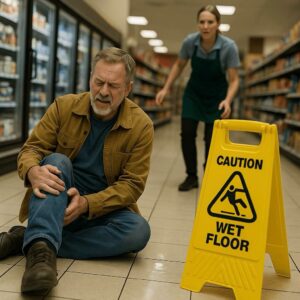It may sound impossible, but there are ways to make a motorcycle crash happen in a relatively safe manner. It isn’t always possible, as in the case of crashes where an automobile crashes directly into a motorcycle. However, even the risk of these crashes can be minimized. Crashing your motorcycle as safely as possible involves preparation and the execution of skills and knowledge meant to reduce injury.
Preparation for Crashing Your Motorcycle
One of the scarier facts about riding a motorcycle is that if you do it long enough, you are likely to crash. Florida has over 10,000 motorcycle accidents per year, and that is only among reported accidents. It also has one of the highest number of motorcycle fatalities compared to other states. Some say this is because there are more motorcycles on Florida’s roads due to the geography and climate. Others say there are more tourists and thus more distracted driving. In any case, any way to make a motorcycle crash safer is worth the effort.
Training for a Crash
 One of the first steps in preparing for a crash is training. In order to get your motorcycle endorsement, you must take a basic motorcycle rider course. This ensures you know how to ride straight, corner, and brake properly. The course teaches basic motorcycle technique. However, there is an advanced course that improves your training in crash avoidance or risk reduction.
One of the first steps in preparing for a crash is training. In order to get your motorcycle endorsement, you must take a basic motorcycle rider course. This ensures you know how to ride straight, corner, and brake properly. The course teaches basic motorcycle technique. However, there is an advanced course that improves your training in crash avoidance or risk reduction.
An advanced motorcycle course teaches you how to recognize hazards even when a crash is inevitable. In this way, you can choose a path that results in the least risk of injury or greatest chance of survival. It also teaches you how to swerve, stop quickly, and handle sharp curves.
Lastly, if you put your bike away during any time of the year, ease back into riding. Don’t immediately go out on the freeway. Instead, go on some low-key rides with less traffic, so you can brush up on the skills you learned via training and experience.
Preparation for Crashing Your Motorcycle with the Right Gear
 Another way to prepare for a crash is by choosing proper gear. This means getting a full face helmet or a modular helmet that offers full protection. Half helmets are better than no helmet, but they just don’t offer the same amount of protection.
Another way to prepare for a crash is by choosing proper gear. This means getting a full face helmet or a modular helmet that offers full protection. Half helmets are better than no helmet, but they just don’t offer the same amount of protection.
A good motorcycle jacket is also an effective way to reduce injury. The material, often leather or Kevlar of some sort, will help keep your skin from abrading (or worse) during a slide. Choose a jacket that is quality designed and stitched to hold together, and you’ll have a much better chance of crashing safely. Materials are available to keep you warm and cool, so there really isn’t a good reason not to wear a jacket.
Motorcycle pants are similar to a jacket in that they simply provide protection for your skin. Both jackets and pants can also provide padding that can help reduce impact injuries as well.
Lastly, it is important to cover your feet and your hands when riding. If you don’t, and you are in a crash, you will wear definitely decide to wear gloves and boots in the future. Imagine the damage that the pavement can do to your hands and feet, and that should be enough to motivate you to cover them up.
Keep Preparation for Crashing in Mind
When you go out to ride your bike, you should always be preparing for crashing your motorcycle. This does not mean riding in fear. In fact, it means the opposite. It means riding with the peace of mind that you’ve done everything you can do to reduce the risk of injury in the event of a crash.
Keeping preparation for a crash in mind will help you to remember to do your T-CLOCS inspection. It will help you to choose a bike that you can handle easily and is the right type for your usage. It will help you make better decisions such as not drinking alcohol when riding your motorcycle. Overall, preparation is not just a physical action. It is also a mental attitude that helps you ride more safely and prepare for worst-case scenarios.
Execution of Skills When Crashing Your Motorcycle
 As stated previously, if you ride long enough, you are likely to experience crashing your motorcycle. Safe crashes are not always possible, but in many cases, there are ways to “safely” crash your bike.
As stated previously, if you ride long enough, you are likely to experience crashing your motorcycle. Safe crashes are not always possible, but in many cases, there are ways to “safely” crash your bike.
Step 1: Reduce speed. This is counter-intuitive for many crash avoidance skills because for instance, if you are on a corner, leaning into the corner and maintaining speed may help you to maneuver out of the crash. However, if a crash is inevitable, reducing speed is the best thing to do to reduce injury. Don’t apply brakes too quickly, and try to slow smoothly to avoid going over your handlebars.
Step 2: Look for a crash site. You will likely have a split second chance to control where you land. This may mean letting go of your handlebars at the right time to avoid your bike landing on you. It may mean steering at the last second to avoid traffic. Anything you can do to avoid running into anything is optimal.
Step 3: Don’t brace for impact. Many injuries are worsened by our natural reaction to stiffen and try to control a fall. It may sound impossible, but if you can, tuck in your appendages and try to relax your body as you fall. Don’t ball up, and try to lie on your back if you are going to slide. Avoid putting your arms down, as you will increase your chances of hurting your wrists. Every crash is different, but it is common to end up in a slide, and you may have to ride it out in order to survive.
Step 4: Get to a Safe Location. Once you have stopped, immediately evaluate your surroundings. If you are in traffic, try to get out of it. This may mean rolling off the road if you cannot stand. In any case, use whatever strength you have to avoid being run over by other vehicles.
Sometimes, Safely Crashing is a Possibility
Motorcycle crash statistics are often a glum reminder of the fact that riding a motorcycle is inherently dangerous. You don’t have the protection from a frame like you do in a passenger vehicle. The only thing you can do to make it safer is prepare for a crash and execute your knowledge and experience when a crash happens. It may help to watch some videos of crashes to get experience without actually having to be in a wreck. There are riders who have survived multiple crashes because they knew how to crash “the right way.” You won’t be able to avoid injuries in all cases, but sometimes, there are ways to safely crash your motorcycle. Crashing safely isn’t all about luck, and there are many times that riders are able to control the crash enough to walk away from the accident on their own two feet.
If you’ve been injured in a motorcycle accident and would like to speak to a lawyer, contact Kirshner, Groff, and Diaz for a no-obligation consultation.



